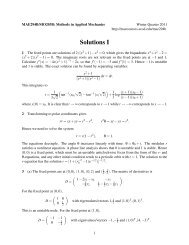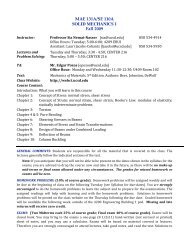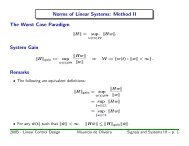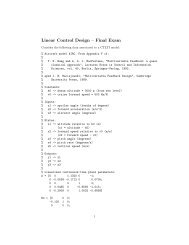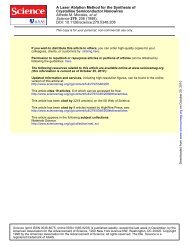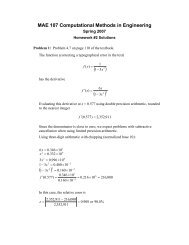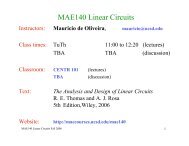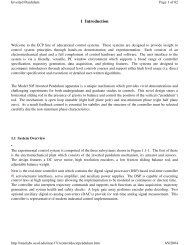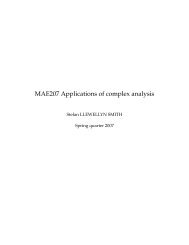solution
solution
solution
Create successful ePaper yourself
Turn your PDF publications into a flip-book with our unique Google optimized e-Paper software.
for every value of k .<br />
(2) From the second figure in Figure E.30, the signal is odd with T0 = 1, ω0 = 2π<br />
1<br />
T0<br />
− jkω0t X[ k] = x( t) e dt<br />
T ∫0<br />
0<br />
1/2<br />
= ∫<br />
1/2<br />
2<br />
1/2 ()<br />
− jk πt<br />
x te dt<br />
−<br />
1/2 1/2<br />
∫ ∫<br />
= x( t)cos(2 kπt) dt− j x( t)sin(2 kπt) dt<br />
−1/2 −1/2<br />
<br />
odd<br />
even<br />
So, x()cos(2 t k t) dt 0<br />
1/2 π ∫ = , the harmonic function X[ k ] have a purely imaginary<br />
−<br />
value for every value of k .<br />
Problem 4 (Chapter 8, P. 32)<br />
Period of a sine wave is<br />
1<br />
6<br />
10 ; period of a burst of “1” is 1<br />
; period of a burst of “0”<br />
5<br />
10<br />
1<br />
is 5<br />
10 ; period of a binary signal with alternating 1’s and 0’s is 1<br />
T 0 = 2× and 5<br />
10<br />
ω π<br />
5<br />
0 = × 10 . The binary signal we want should be like:<br />
x(t)<br />
1<br />
0.5<br />
0<br />
-0.5<br />
-3 -2 -1 0 1 2 3<br />
x 10 -5<br />
-1<br />
t<br />
How can it come?<br />
As we already know the basic sine wave is<br />
x 1 (t)<br />
1<br />
0.5<br />
0<br />
-0.5<br />
x t = × t , shown as<br />
6<br />
1 () sin(210 ) π<br />
-3 -2 -1 0 1 2 3<br />
x 10 -5<br />
-1<br />
t<br />
In order to get the wanted signal, the signal shown above should multiply with a



